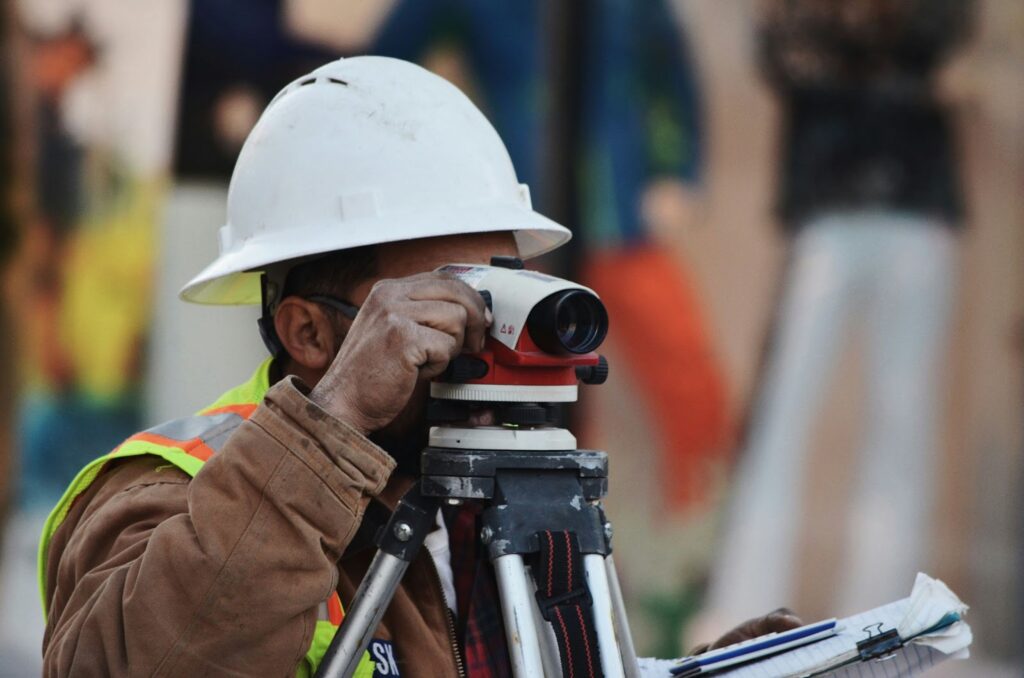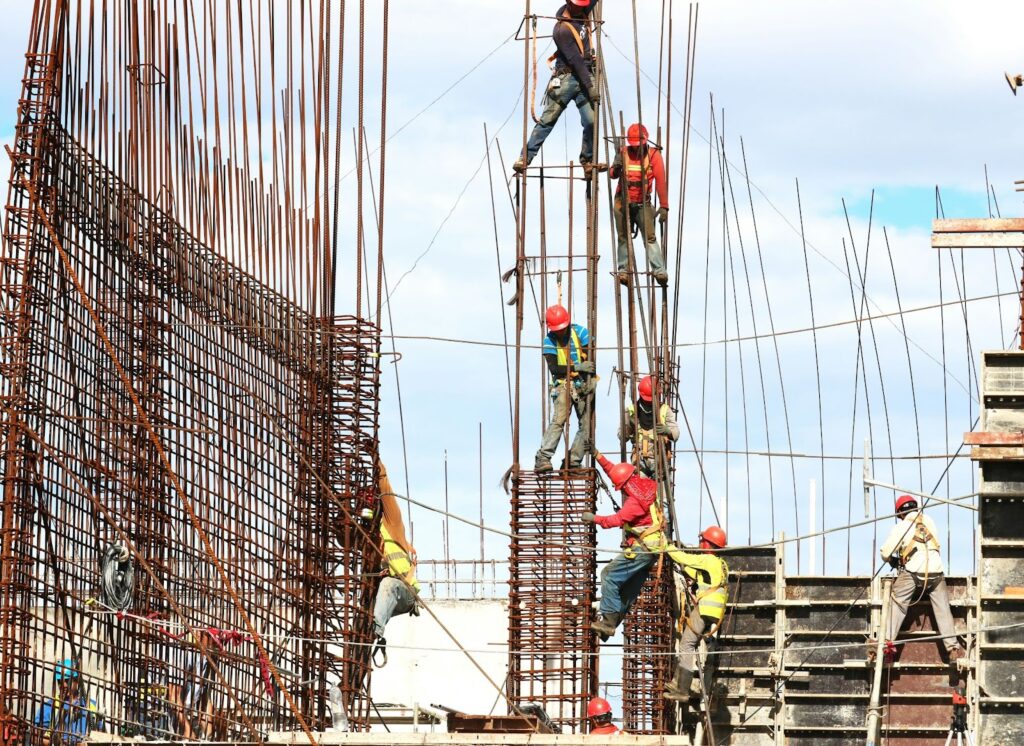It’s crucial to know the overall cost of building a steel structure, and equally important is to calculate the cost per square foot to keep the project on budget and prevent any unexpected expenses.
Understanding the basics of steel building costs and the factors that influence them is the first step toward an accurate cost estimation.
Globally, the steel market is projected to grow at a compound annual growth rate (CAGR) of 2.8% from 2023 to 2030. By the end of 2021, there was a 12% increase in the metal construction industry segment.
This article will provide a detailed breakdown of steel building costs, guide you through the process of cost calculation, explore ways to reduce costs and discuss future trends in steel building costs.
Table of Contents:
- Understanding the Basics of Steel Building Costs
- Detailed Breakdown of Steel Building Costs
- The Process of Calculating Costs per Square Foot
- How to Reduce Steel Building Costs
- Future Trends in Steel Building Costs
- Conclusion
- Frequently Asked Questions
Understanding the Basics of Steel Building Costs
Factors Influencing the Cost of Steel Buildings
Several factors impact the overall cost of a steel building project. These factors include the size and complexity of the structure, geographical location, design requirements, and local building codes.
While some factors are beyond our control, understanding them allows for better cost management and decision-making.
Geographical location plays a significant role in determining steel building costs. Areas with higher material and labor costs will naturally have higher overall project expenses. Additionally, accessibility to the construction site, local regulations, and environmental factors can all influence the final cost of the steel building project.
Prefabricated steel structures offer significant cost savings compared to conventional buildings, with an estimated 30% lower cost and faster construction times.
The Role of Square Footage in Cost Calculation
The square footage of a steel building is a critical factor in cost calculation. It determines the amount of materials required, the size of the foundation, and the overall construction time.
Understanding the relationship between square footage and costs helps in developing an accurate estimation.
Moreover, the layout and design complexity within the square footage can also impact costs.
Intricate designs or specialized structural requirements may increase material and labor expenses. It is essential to consider not just the total square footage but also the specific layout and design elements when estimating the cost of a steel building project.
Check out: Costs Of A 200×200 Metal Building
Detailed Breakdown of Steel Building Costs
Material Costs for Steel Buildings
The cost of materials is a significant component of steel building costs. Steel prices fluctuate due to market conditions, availability, and quality. Other materials such as insulation, roofing, doors, and windows also contribute to the overall cost. Obtaining quotes from multiple suppliers and comparing prices can help in finding the most cost-effective options.
When considering material costs, it’s essential to factor in the transportation expenses associated with delivering the materials to the construction site. Depending on the distance and logistics involved, transportation costs can vary significantly and impact the overall budget.
Additionally, the quality of materials chosen can affect long-term maintenance and durability, potentially influencing costs over the building’s lifespan.
SteelCo provides nationwide dropshipping services for customizable and high-quality PEMB (Pre-Engineered Metal Building) materials that are tailored to meet your specific style preferences and requirements.
Labor Costs in Steel Construction
Labor costs in steel construction involve hiring skilled workers, project management, and supervision. The complexity of the project and the expertise required directly affect labor costs.
Additionally, factors such as building location, union conditions, and contractor selection influence labor expenses. It is crucial to carefully evaluate labor costs to ensure they align with the project budget.
Skilled labor is a vital component of steel construction, as the precision and expertise required in erecting steel structures demand experienced professionals. Training and certifications for workers can also impact labor costs, as specialized skills command higher wages in the construction industry.
Collaboration between the construction team and project managers is essential to optimize labor efficiency and cost-effectiveness throughout the building process.
Additional Costs: Permits, Inspections, and More
Aside from material and labor costs, various additional expenses must be considered. These include obtaining building permits, conducting inspections, hiring engineers or architects for design, and acquiring insurance coverage.
Failure to account for these costs can lead to budget overruns and project delays. Engaging with local authorities and professionals can help in estimating and managing these additional expenses effectively.
Furthermore, unforeseen circumstances such as inclement weather, site preparation requirements, or changes in building codes can also impact project costs.
Building contingencies into the budget to accommodate unexpected expenses is a prudent approach to safeguard against financial setbacks during construction.
Regular communication and collaboration among all stakeholders are essential to address cost considerations proactively and ensure the successful completion of the steel building project.

The Process of Calculating Costs per Square Foot
Step-by-Step Guide to Cost Calculation
Calculating steel building costs per square foot involves a systematic approach. The following steps outline the process:
- Define the project scope and requirements.
- Determine the square footage of the structure.
- Obtain quotes for materials and labor.
- Incorporate additional costs, such as permits and inspections.
- Summarize the costs and divide by the square footage to obtain the cost per square foot.
Once you have calculated the cost per square foot, it is essential to compare it with industry standards and similar projects to ensure accuracy and competitiveness.
Additionally, revisiting the calculations periodically throughout the project can help in tracking any deviations and making necessary adjustments.
Common Mistakes in Cost Calculation
There are common mistakes that can lead to inaccurate cost calculations. These include underestimating material quantities, overlooking hidden costs, not considering inflation or market fluctuations, and failing to include contingencies.
A thorough and detailed cost analysis, combined with careful review, can help identify and rectify these potential errors.
Furthermore, it is crucial to factor in the cost of sustainability measures and energy-efficient solutions, as they can impact long-term operational expenses and overall building performance.
Engaging with experts in green building practices and sustainable design can provide valuable insights into cost-effective solutions that align with environmental goals and regulatory requirements.
How to Reduce Steel Building Costs
Tips for Cost-Effective Steel Building Construction
There are several strategies to reduce steel building costs without compromising quality:
- Optimize the design for material efficiency.
- Utilize standard sizes and components to minimize waste.
- Explore alternative construction methods or pre-engineered solutions.
- Engage with experienced contractors and suppliers to leverage their expertise and negotiate better prices.
The Impact of Design Choices on Cost
The design choices for a steel building significantly affect the overall cost. Complex designs with unique architectural features or intricate structural elements generally result in higher costs.
Simplifying the design while maintaining functionality and aesthetics can lead to substantial savings. Collaborating with architects and engineers during the design phase helps strike the right balance between cost and design objectives.
Moreover, the choice of materials can also impact the cost of a steel building project. Opting for high-quality, durable materials may initially seem more expensive, but it can result in long-term cost savings due to reduced maintenance and repair expenses. Additionally, selecting locally sourced materials can help lower transportation costs and support the regional economy.
Energy Efficiency and Cost Savings
Another crucial factor to consider when aiming to reduce steel building costs is energy efficiency.
Implementing energy-efficient design elements such as proper insulation, efficient HVAC systems, and energy-saving lighting can lead to significant long-term cost savings on utility bills.
Investing in renewable energy sources like solar panels can further reduce operational costs over time while promoting sustainability.
Pro tip:
Selecting the appropriate color for steel buildings can have a significant impact on energy efficiency. Lighter colors such as whites and pastels have the ability to reflect sunlight, thereby reducing heat absorption and potentially lowering cooling costs. For further insights on this topic, check out “Choosing The Right Colors For Your Metal Building.“
Future Trends in Steel Building Costs
Predicting Steel Price Fluctuations
Forecasting steel price fluctuations is essential for accurate cost estimation. Factors such as global demand, political regulations, and raw material availability impact steel prices. Monitoring market trends and staying informed about the industry can assist in anticipating price changes and optimizing cost estimates.
Additionally, it is crucial to consider the impact of geopolitical events on steel prices. Tariffs, trade agreements, and economic policies of major steel-producing countries can significantly influence the cost of steel.
For instance, recent trade tensions between major economies have led to fluctuations in steel prices, affecting construction projects worldwide.
By closely monitoring these developments, project managers can adapt their cost estimates to mitigate potential financial risks.
Did You Know?
In 2021, the prices of structural steel saw remarkable fluctuations, with costs rising by 91% since the end of 2020. Notably, there was a 45% increase in the final quarter of 2021, marking a departure from the relative stability observed in 2019 and 2020.
The Influence of Technological Advancements on Costs
Technological advancements in steel production, construction techniques, and prefabrication methods continue to impact steel building costs. Innovations such as advanced software, automation, and improved manufacturing processes enhance efficiency and reduce labor requirements. Leveraging these advancements can lead to cost savings and improved project timelines.
Furthermore, the adoption of sustainable practices in steel production and construction can also influence costs.
Green building certifications, such as LEED and BREEAM, incentivize the use of environmentally friendly materials and processes. While initially requiring a higher upfront investment, sustainable steel building practices can result in long-term cost savings through energy efficiency and reduced maintenance expenses.
Integrating sustainability into cost estimation models is becoming increasingly important as environmental considerations play a larger role in construction industry trends.

Conclusion
Accurately calculating steel building costs per square foot is a critical step in ensuring budget feasibility and successful project execution. Understanding the basics of steel building costs involves breaking down the components and following a systematic cost calculation process. By exploring methods to reduce costs and staying informed about future trends, stakeholders can make informed decisions. This approach helps optimize cost efficiency in steel construction projects.
SteelCo has 23+ years in dropshipping prefabricated metal building materials nationwide, ensuring you have the necessary customizable kits to construct your ideal building.
Our team specializes in delivering custom prefab steel structures tailored to meet your exact needs, including steel panels, framing, roofing, and other material requirements. We work with suppliers who comply with industry standards such as MBMA, AISC, and AISI, ensuring that you receive top-quality steel materials for your project.
If your project is located in Georgia and you have a specific design in mind for your steel building construction, we have the expertise to turn your vision into reality.
————-
Frequently Asked Questions
How much does a steel building cost?
When estimating the cost of a storage project, it’s important to consider potential customizations from different clients, which can make it challenging to provide an accurate estimate. Generally, the cost for a steel building can range from $17 to $20 per square foot for PEMB (Pre-Engineered Metal Building) materials. Building erection typically costs between $6 to $10 per square foot, and the full construction cost, including materials and construction, ranges from approximately $110 to $150 per square foot (small, <100k SF). It’s important to note that these estimates can vary significantly depending on supply and demand dynamics, as well as other market factors.
How much does it cost to build a 10,000 sq ft building?
A 10,000-square-foot steel building would typically cost between $1,100,000 and $1,500,000 for full construction (including materials and labor, for projects under 100k SF) based on an estimated cost of $110 to $150 per square foot.
——————————-
Check out these related articles:
> Costs For A 100 X 200 Steel Building
> How Much Does A Pre-Engineered Building Cost?
























